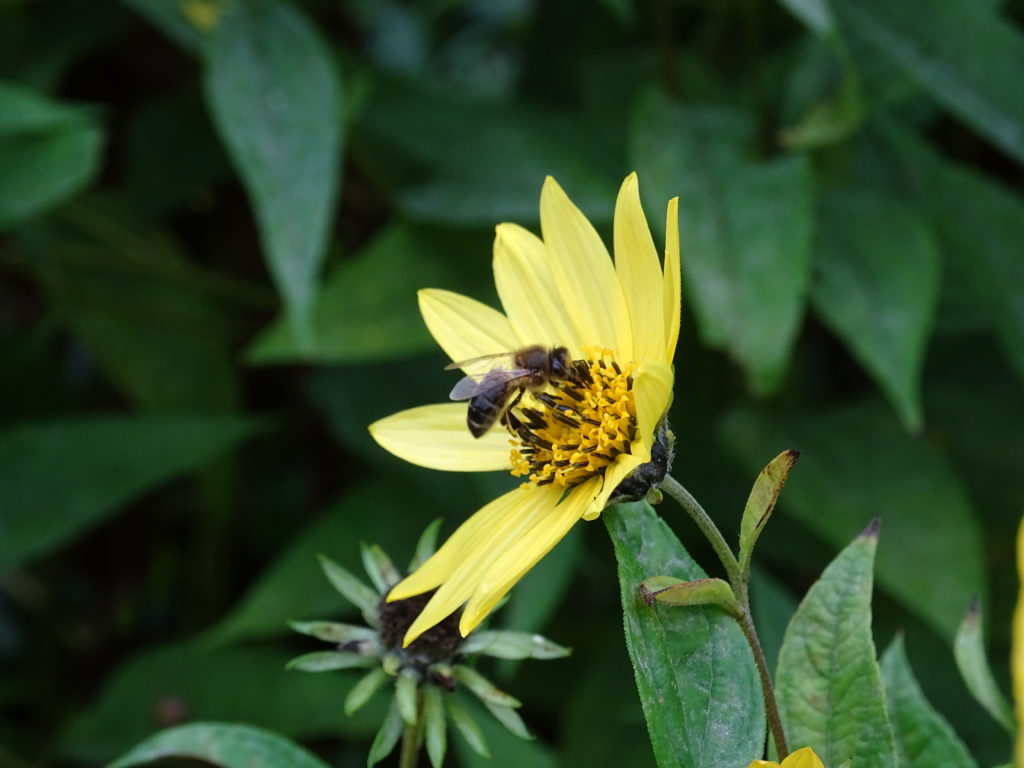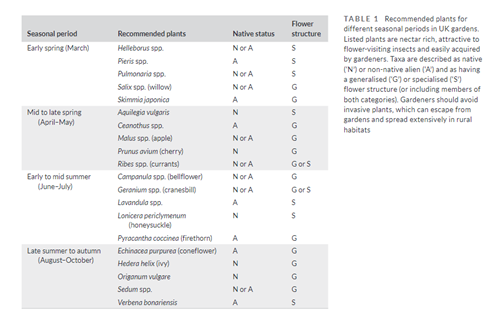From the University of Bristol

The university of Bristol have recently conducted a fascinating bit of research, published in the Journal of Applied Ecology, into the importance of our gardens for pollinators. A total of 59 gardens across Bristol were subject to survey from March to October. Researchers recorded the number and species of flowering plants at each visit. They then used data on the nectar content of each species to estimate the quantity of nectar being produced in each garden.
Interestingly, the size of the garden had little relationship with the amount of nectar it produced. A small garden can be just as beneficial to our pollinators as a large garden. It all comes down to what you plant in it. In fact, the highest nectar producing garden produced more than 700 times more nectar than the lowest nectar producing garden. The results showed a whopping 636 different species of flowering plants across all of the gardens surveyed! However, a significant proportion of these were only accessible to relatively specialised pollinators, such as long tongued bumble bees, due to the flower shape.
Intriguingly, two-thirds of the nectar came from flowering shrubs, trees and climbers. Making these extremely valuable and a space efficient ways of providing for pollinators.
The quantity of nectar available was also tracked over time. Overall, it peaked in mid-summer, which happily is when nectar is in highest demand as our pollinators are out in force. However, when looked at individually, at least one garden peaked in the amount of nectar available each month. This highlights the fact that we shouldn’t look at our gardens as standalone islands. Each garden is part of a local network and no single garden needs to provide everything. Surprisingly the amount of nectar available across all the gardens was more stable through the year than in rural farmland. Once again this highlights the importance of our gardens in conserving our nations pollinators.

For the full article, follow this link:
https://besjournals.onlinelibrary.wiley.com/doi/epdf/10.1111/1365-2664.14094

